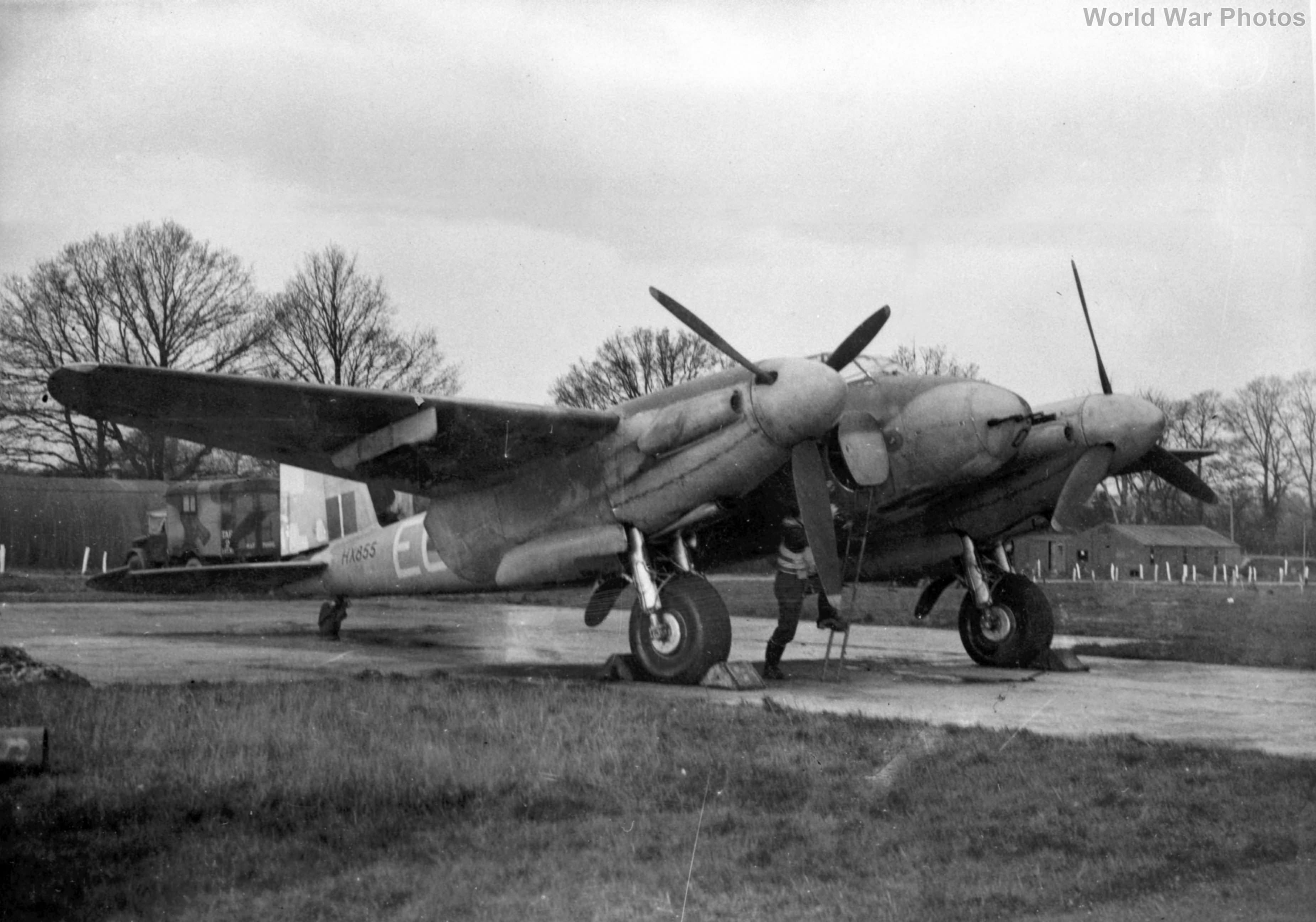The Mosquito FB.VI was a significant development in the de Havilland Mosquito series, representing the most widely used fighter-bomber variant. Here’s a summary of its development and operational history:
Development and Specifications
- Origin and Prototyping:
- The prototype FB.VI, designated HJ662, made its maiden flight on June 1, 1942. However, it was lost during flight trials at Boscombe Down due to an engine failure, leading to a crash that also damaged two Beaufighters on the ground.
- Armament and Variants:
- Series 1: The initial production run of 300 FB.VI aircraft was equipped for the fighter-bomber role, carrying two 250 lb bombs in the rear bomb-bay and one under each wing. The standard armament included four .303 in machine guns and four 20 mm cannon mounted in the nose.
- Series 2: This later version enhanced the bomb-carrying capacity, allowing for two 500 lb bombs in the rear bomb-bay and two under each wing, while retaining the same nose-mounted guns.
- An additional variant, the FB.XVIII, was equipped with a 57 mm Molins gun in the nose for specialized anti-ship and ground attack missions. The prototype for this version, HJ732, flew for the first time on June 8, 1943, with less than 20 units produced, all of which were allocated to 248 Squadron.
Operational Roles
Day and Night Intruder Operations:
- The FB.VI was versatile, serving both day and night intruder roles. It replaced the Douglas Boston III in this capacity, starting with 418 Squadron at Ford in May 1943.
Coastal Command and Anti-Shipping:
- The aircraft transitioned to Coastal Command from December 1943, where it progressively replaced the Bristol Beaufighter in the anti-shipping role. Notably, the FB.VI became a proficient platform for launching unguided rocket projectiles (RP), which were initially tested on aircraft HJ719.
Notable Combat Use:
- The Banff Strike Wing utilized the FB.VI extensively from September 1944 until the end of World War II, targeting enemy shipping along the Norwegian coast. Equipped with eight 60 lb RPs and the standard nose guns, the FB.VI’s firepower was considered equivalent to the broadside of a 10,000-ton cruiser, underscoring its devastating effectiveness.
The Mosquito FB.VI’s combination of speed, versatility, and heavy armament made it one of the most formidable fighter-bombers of World War II, capable of performing a wide range of combat roles with great success.
